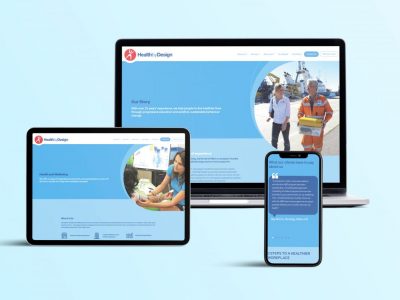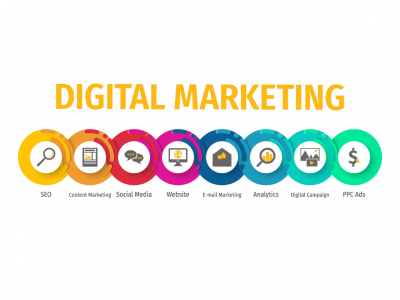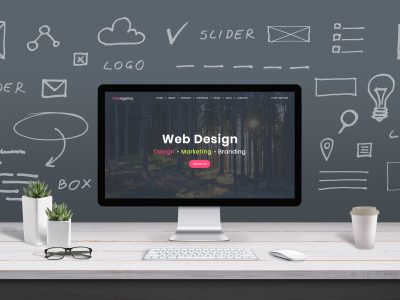Blogging for business and lead generation

1. CHOOSE THE TOPIC CAREFULLY

Carefully consider your topic and the terms your target market are most likely to search for.
Carefully consider your topic and the terms your target market are most likely to search for, during the information research phase of the purchasing cycle.
The information research phase is the window in the purchasing cycle between when the consumer is deciding to buy a product or service, and the time before the transaction takes place. It’s the hunt and gather period, when consumers research websites looking to educate themselves on a particular product or service.
To give you an example, if one was to blog about a topic on website design, with the aim to generate traffic on the topic, we may suggest the following:
‘Top 1O questions to ask your Perth Web Designer’
as opposed to:
‘Hottest web design trends of 2O13’.
You may well be an expert web designer in Perth with a keen eye for web design trends however, this type of post will most likely attract industry peers, but it won’t attract the audience searching for your service.
2. CRAFT THE HEADLINE
Writing an effective blog headline for your website will most likely take longer than writing the post itself.
If the blog headline isn’t optimised for the terms your target audience are searching for, they are simply not going to find your website’s blog page.
The most effective blog headline usually isn’t the title you would expect. Google has a great website tool called the Google Keyword Planner. This is a great resource to discover the most searched phrases and keywords based around your headline or topic.
Don’t use industry jargon in the headline, terms that may be familiar to you may not be to your target audience.
A good example is is the term ‘Electronic Direct Mail’ or eDM for short. Most end consumers have never heard this term before, it’s the industry term for an ‘eNewsletter’.
Using Google’s keyword planner it tells us to use the phrase ‘eNewsletters’ instead of Electronic Direct Mail as ‘eNewsletters’ gets far more monthly searches.
Therefore if you we’re blogging about eDM’s we would suggest a title it something along the lines of: ‘How to get the most out of an eNewsletter’ not ‘How to get the most of an eDM’.
3. FORMAT TEXT FOR THE SCREEN
The human eye reads text on a screen differently to paper – many people struggle with large blocks of text on a screen
Keep paragraphs short, no more than 40 words or so.
With mobile optimised websites becoming more prevalent, paragraphs quadruple in size when viewed on a mobile device. A long paragraph on a desktop website is about 5 or 6 scroll worths’ of text when displayed on a phone.
Also try using numerals instead of the number in words, use ampersands instead of ‘and’ and other symbols to shorten text (unless it’s in a key phrase your trying to rank for).
For instance take the following example without using symbols & abbreviation:
‘Earn fifteen hundred points and get exclusive access to our member specials’.
With symbols and abbreviations:
‘Earn 15OO points & get exclusive access to our member specials’.
Also, use bold & italicised text to help highlight and separate content & always list items out in bullet point form.
Take the following for example:
We offer web design, website development, graphic design, exhibitions and displays, brand design and print communications.
Now read this:
We offer:
- Web Design
- Website Development
- Graphic Design
- Exhibitions & Displays
- Brand Design
- Print Communications
Breaking content with bullets and different typographic formatting, instantly makes the content easier to read.

Break up the page with relevant imagery.
4. BREAK UP THE PAGE WITH IMAGERY
Adding images to website blogs is an area that quite often gets overlooked.
The nature of human curiosity is to scroll down a blog and scan the page for highlighted content, to gain a quick understanding of its value. Statistics show users presented with large areas of text will move on.
Humans are visual creatures, so try breaking content up with imagery. Try using screen grabs, logo’s, graphs, photographs or even illustrations to add more meaning to your blog articles.
5. CONSIDER ENTERTAINMENT
Depending on the topic and your audience, humour can be great method to enlighten readers.
You may have great content and insights but if it has zero personality, it won’t get very far.
You don’t have to be Jerry Seinfeld, but try not to put them to sleep either, language can be conversational, but most of all make it relevant and applicable to the topic and your target audience.
6. DON’T LINK YOUR AUDIENCE AWAY
Have you ever been reading a blog, got distracted and clicked off to another website?
Incorporating links into your website is a great way to add additional background to your blog post however, over do it you will most likely loose your reader. When adding links make sure they are relevant and provide added benefit to the reader.
7. PROMOTE SOCIAL SHARING

Encourage social sharing by including share buttons on your website.
The exponential nature of social media, should not be underestimated when blogging for your website.
Including social media share buttons at the bottom of your blog post is mandatory. Also make a point of asking people to share if they found it useful. You’ll be surprised what people are willing to share with a bit of a prompt.
Posting your blog link across social media is another great method to increase your blog or websites traffic.
8. INCLUDE A CALL TO ACTION
This is the business end of content marketing: include a call to action.
An effective call to action can make a huge difference in converting readers into leads. As a guide, a simple call to action for a blog post like this one could be:
‘Discover how we can turn your blog into a lead generating asset. Contact us today.’
KEY TAKE-AWAYS:
- Carefully select the topic
- Choose a proven search phrase as a headline
- Format text to be screen optimised
- Use imagery to provide visual breaks to the page
- Use informative and relevant language
- Don’t link your audience away
- Promote sharing
- Include a call to action.
Found this blog article useful? Perhaps share it below.
Related Articles
-
3 Reasons Why You Need a New Website
A professional looking, lead generating website is the first step for any Digital Strategy. There are many good reasons for needing a new website, but below are the TOP 3 reasons ...
More -
What’s Important in Web Design Trends In 2022
Now that we are already halfway through 2022, you still have ample time left to improve your web design in line with the latest web design trends. Here are the most ...
More -
Benefits Of Digital Marketing to Real Estate Developers
Digital marketing is imperative for real estate developers. Real estate development is among the biggest and wealthiest industries in Australia. There is always a consistent, strong demand for housing, rental ...
More -
What’s Included in a Website Redesign Project?
A new website often means new opportunities to boost brand image and increase your business’ conversion rate. A website redesign project means revitalising your existing website. It involves optimising the ...
More




